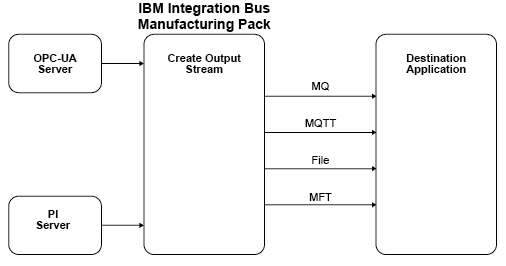The Manufacturing: Factory Publication pattern generates an application that takes information from an OPC-UA or PI Server and retransmits this information over a selected transport for use in another application.

An increasing number of scenarios exist where applications need access to the kind of data that is used in factory level systems. OPC-UA Servers and PI Servers are examples of these and this pattern accelerates development of applications that interact with these systems.
Through pattern parameters, the generated application supports the retransmission of OPC-UA and PI data over a selection of transports. In all cases, customization options are provided in the form of a custom map that can be modified after pattern creation to change the format of the output data.